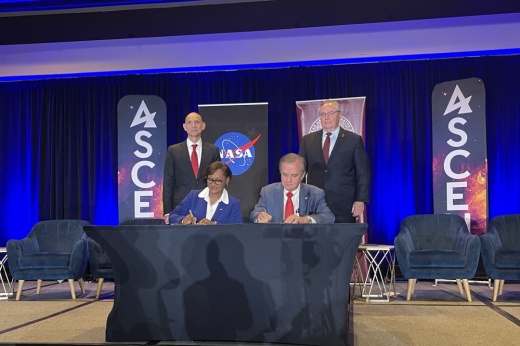What you need to know
At the AscendxTexas conference on Feb. 15, officials with Texas A&M signed the lease for the spot they will build the space institute, which will include both the word's largest climate-controlled lunar scape and Mars scape, Texas A&M University Chancellor John Sharp said at the conference.
Each of those facilities will be about 2.5 acres in size, Sharp said.
The goal is for the facilities to allow both government bodies and private companies to test a variety of things on a simulated surface, such as robotics or developing habitats, which could help solve problems before real traveling begins, Johnson Space Center’s Director Vanessa Wyche said at the conference.
Diving in deeper
The space institute is the first facility approved for NASA’s Exploration Park, which will feature a number of private and government entities aimed at research and testing to prepare for space travel, Wyche said.
The institute will occupy about 30 acres of the new park, which totals about 240 acres, Wyche said. Exploration Park will be located near Saturn Lane next to the space center’s main campus.
In addition to being the largest in the world, the institute will be the first of its kind in the U.S., as many other space-type institutes in the country focus on orbiting rather than training on a surface, Sharp said.
Stay tuned
On Feb. 9, Texas A&M’s Board of Regents approved a conceptual design for the facility, Texas A&M professor Robert Ambrose said in a Q&A session after the presentation.
In the coming months and years, Texas A&M will go out to bid for the facility, with a groundbreaking possible in 2024, Ambrose said. The construction timeline is expected to take two to three years, with the goal being to get the facility up and running prior to future scheduled moon landings, Ambrose said.
“We’re pretty good at building buildings,” Ambrose said of Texas A&M.
As part of the $350 million grant approved by the state legislature in 2023 for the project, a space commission was also created, Texas State Rep. Greg Bonnen, R-Friendswood, said at the conference. Members of the commission could be announced “in the very, very near future.”





